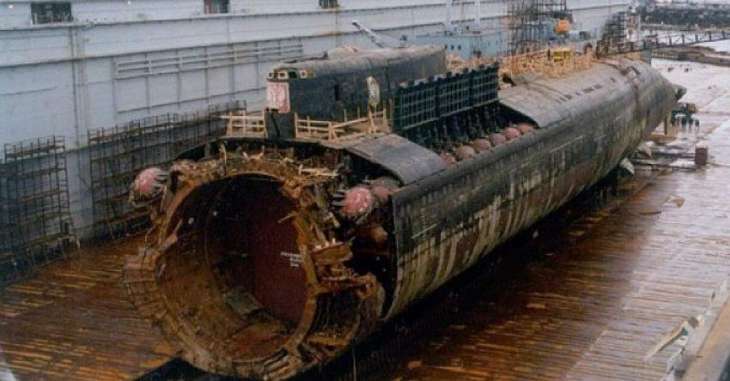A memorial service for the crew of the Russian nuclear submarine, Kursk, which sank in the Barents Sea 20 years ago, has been held at St. Nicholas Naval Cathedral in St. Petersburg
ST. PETERSBURG (Pakistan Point News / Sputnik - 12th August, 2020) A memorial service for the crew of the Russian nuclear submarine, Kursk, which sank in the Barents Sea 20 years ago, has been held at St. Nicholas Naval Cathedral in St. Petersburg.
The Kursk submarine sank at a depth of 108 meters (354 feet) on August 12, 2000, during an exercise. According to the investigation team's report, the submarine was hit by two explosions. The first was caused by a leak of hydrogen peroxide fuel inside the fourth torpedo launcher. It caused a heavy fire and a further blast of the ammunition. All the 118 crew members on board died.
The commemoration service began at noon (09:00 GMT) in the courtyard of St. Nicholas Naval Cathedral, where a memorial plaque with the Names of the crew was installed several years ago. During the memorial service, all crew members were called by name. The relatives of the victims of the Russian navy's worst-ever disaster were also present.
"The pain that was 20 years ago, burning and absorbing, has certainly changed. We have learned to live with it. We have more bright memories of people who lived and perished and are proud of them. Well, children and grandchildren give strength. It is a pity that they will not see their grandchildren," one of the female relatives told reporters.
Two hours later, St. Petersburg Governor Alexander Beglov, families of the victims and the military paid tribute to the late sailors at Serafimovskoye cemetery near the memorial, where 32 of crew members and their commander, Hero of Russia and Capt. 1st Rank Gennady Lyachin, were buried.
The Kursk tragedy became one of the deadliest submarine accidents in the world's history, second only to the loss of USS Thresher in 1963, which left 129 people dead. The accident is widely believed to have been caused by the overall poor state of the Russian armed forces at the time.
The tragedy also triggered a serious overhaul of the Russian Navy's emergency rescue service. At that time, the country lacked any capabilities to rescue the crew at such a depth and finally had to request international assistance. It was nine days after the disaster that Norwegian divers managed to open the submarine's airlock to see all the seamen dead.




